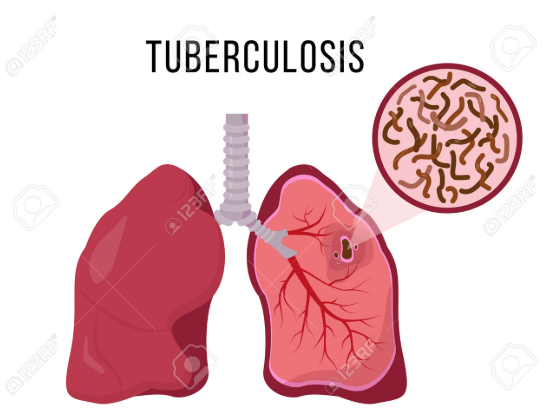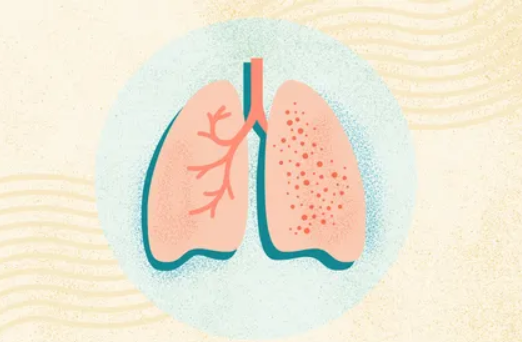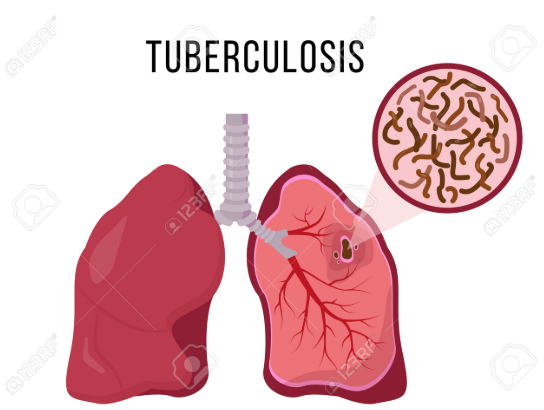Tuberculosis (TB) is a contagious infectious disease caused by the bacterium Mycobacterium tuberculosis. It most commonly affects the lungs (pulmonary TB), but can also spread to other organs such as the kidneys, spine, or brain (extrapulmonary TB).

Causes:
- Caused by Mycobacterium tuberculosis.
- Spread through the air when an infected person coughs, sneezes, or speaks.
- More likely to spread in crowded, poorly ventilated places.
- People with weakened immune systems (HIV, malnutrition, diabetes) are at higher risk.
Symptoms of Pulmonary TB (lungs)
- Persistent cough lasting more than 3 weeks.
- Coughing up blood or sputum (mucus).
- Chest pain or discomfort when breathing or coughing.
- Fever, often low-grade and persistent.
- Night sweats.
- Fatigue and general weakness.
- Unexplained weight loss.
- Loss of appetite.

Symptoms of Extrapulmonary TB (other organs)
- Lymph nodes: swollen, painless lumps.
- Kidneys/urinary tract: blood in urine, pain while urinating.
- Spine (Pott’s disease): back pain, spinal deformities.
- Brain (TB meningitis): headache, confusion, neck stiffness, seizures.
- Other organs: symptoms depend on the organ involved.
Treatment of Tuberculosis:
1. Antibiotic Therapy (First-line Treatment)
- TB is treated with a combination of antibiotics for 6–9 months to fully eradicate the bacteria.
- Common first-line drugs:
- Isoniazid (INH)
- Rifampicin (RIF)
- Pyrazinamide (PZA)
- Ethambutol (EMB)
- The initial phase usually lasts 2 months with all four drugs, followed by a continuation phase of 4–7 months with fewer drugs.
2. Directly Observed Therapy (DOTS)
- Healthcare worker supervises patients to ensure they take their medication regularly.
- Reduces drug resistance and improves treatment success.
3. Treatment for Drug-Resistant TB
- MDR-TB (multi-drug-resistant TB): Resistant to Isoniazid and Rifampicin.
- XDR-TB (extensively drug-resistant TB): Resistant to most first- and second-line drugs.
- Requires longer treatment with second-line antibiotics under strict medical supervision.
4. Supportive Care
- Adequate nutrition.
- Rest and avoidance of smoking or alcohol.
- Management of co-existing conditions (HIV, diabetes, malnutrition).
